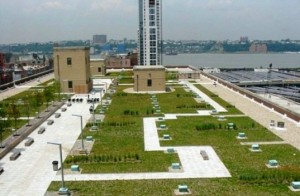Archive for the ‘Green Roofing’ Category
GE Eco Imagination Contest
GE is sponsoring a $200 million innovation experiment encouraging participants to submit their best ideas on how to build the next generation power grid. The most promising ideas will be backed by a team of venture capital firms.
There are 3 categories to submit your ideas to or to vote on your favorite:
1. Create – Renewable energy. Integrating and managing renewable energy sources for our growing demands of a reliable supply of affordable energy.
2. Connect – Grid efficiency. Different grid technologies that help lower delivery losses and those that anticipate and monitor demand.
3. Use – Eco homes/Eco buildings. Energy consumption is growing so quickly that it is creating an imbalance between supply and demand.
Global energy consumption forecast to be tripled by 2050. GE is looking for technologies that help power companies and their customers share information and manage their energy use better. Changing how and when we use energy. What technologies, processes or business models can help consumers use energy more
wisely and improve our energy balance.
With anticipated higher energy costs and shorter supply, even if you don’t enter this contest, it is still an excellent idea to invest your time and resources into finding creative ways to save on energy and make your home or business more eco friendly.
Get more information at www.challenge.ecomagination.com.
Arbor Day Foundation Getting Green Roof
Arbor Day Foundations is adding a new mission to their “plant, nurture and celebrate trees.” A 7,369 square foot green roof is being installed at the Foundations building in Lincoln Nebraska. The roof will be a testing ground to determine what types of prairie plant can thrive on urban rooftops.
University of Nebraska professor Richard Sutton has dedicated a 400 square foot test plot to find out which species of prairie plants do well in this environment. Together with Scott Enterprises Inc., and Sinclair Hille Architects in Omaha, they came up with a design that would be lightweight since the existing roof could not support a lot of soil. The roof will be planted with sedum and other low growing shrubs and grasses to minimize weight. Sedum is similar to a succulent and is an ideal plant because it lies on the surface, does well in drought conditions and can withstand intense temperatures.
Generally, green roofs cost somewhere between 35-50% more than just replacing a commercial roof. Financial support has come from some of the over 1 million Arbor Day Foundation members also from the WRK Family Foundation in Lincoln. The benefit of the green roof is additional roof life, reducing rainwater runoff, and is estimated to cut the foundations heating costs by 20-25% annually.
Planting will begin in September and is estimated to take a year or two for the roof to be green. Once the roof is installed, you can call the foundation and make an appointment to see the green roof.
Sales Go Through the Roof with New Solar Roofing NVQ
Giving youngsters a chance to find a career in solar roofing, Ploughcroft Building Services in Yorkshire have developed a National Vocation Qualification (NVQ) to help set the standard across the UK for this type of work. As the solar industry is beginning to boom, this nationally recognized qualification is perfect for those wanting to find a job in solar panel fitting.
The British government has accepted the NVQ as they believe it will boost the roofing market in this new-age of eco home improvement.
Ploughcroft Building Services’ managing director Chris Hopkins bought the family owned business off his retiring father and set about a new direction for the company in eco-roofing. In Brighouse, Yorkshire Hopkins built an eco-roof center which offers demonstrations of the solar roof panels and explains how important and worthwhile they are.
The NVQ was developed by the company and is now available in 11 different colleges across the UK. Fortunately for Chris Hopkins, whose father was skeptical about the training course, the NVQ is becoming more and more popular with college-goers seeing the potential in the solar roofing field.
Under the government’s feed-in tariff, UK homeowners can receive up to £1000 cash back per year for the ‘clean energy’ generated by the panels. By harnessing the power generated, the return on their initial investment can be as much as 10%, which as Mr. Hopkins points out is “far higher than those interest rates given by high street savings accounts”.
With PM David Cameron having a wind turbine installed on the roof of his home, self-generated green technologies have increased dramatically across the UK and Ploughcroft has also seen a rise in their sales. “With the new cash back scheme, businesses, homeowners and community buildings have been contacting us in floods”, said Mr. Hopkins.
The firm is looking to take on extra staff over the coming months to deal with the demand. With the new NVQ and construction skills certificates, they can train the staff even further and aim to dominate the market.
Source:
http://www.yorkshirepost.com
First Green Roof for Juneau Alaska
Juneau Alaska’s new downtown transportation center will be the city’s first building to get a living green roof. Being the first of its kind in South East Alaska, the 1,000 square feet roof will have sedums and native Alaska sea thrift. The greenery acts as insulation saving the city money on heating and cooling costs.
The roof was designed to be attractive and environmentally sensitive. The native plants selected are hearty and can survive heavy rains, draught and heat without much landscaping and will save on maintenance costs. The flowers will bloom at different times creating diverse views throughout the year. The plants are set in square trays and laid out in basket patterns on the rooftop. Although the roof is not accessible to patrons, it can be viewed from a neighboring 4 level parking garage and from nearby Telephone Hill Park.
The under construction transit center will have a waiting area for the bus line, concessions, restrooms and a police substation. Anchorage and Fairbanks Alaska are already implementing green roofs on some of their buildings.
Indiana Middle School to Get Solar Roof
An Indiana school board agreed on a $1.35 million bid for a solar roofing project for a Southwest Allen County district middle school. The new roof is expected to help reduce the districts utility costs. because of the roofs energy savings benefits, the federal government could contribute $600,000 to the cost pending approval of Performance Services paperwork.
The job will be completed by Performance Services, an engineering and construction company out of Indianapolis Indiana. Specializing in sustainable projects, Performance Services has estimated the district will begin saving $37,000 the first year the project is completed. The entire project is expected to pay for itself in approximately 8 years.
The cost includes the boilers and ventilators as well as a roof with solar panels that will generate electricity for the school. Performance Services have
included a dashboard that will reveal the exact energy savings, providing a valuable learning tool for the students and faculty.
Beach Huts Going Green
Blythe, in the north-east of England, is a popular place to visit for holidaying and weekend breaks. With expansive beaches that are wonderfully tranquil, it is no wonder that many people have their own beach huts lining the sea-shore.
A recent shift towards being ‘green’ in the north-east has seen the architects, ID Partnerships, design mini roof gardens on the beach huts. This has created a truly natural look for the jazzy colored beach huts. Being only 2.5m x 3.5m, the pitched roofs have had a custom made fitment of a single-ply waterproof membrane which resists damage from roots and is very durable.
The Diadem roof system has been affixed to the membrane and uses an array of plants called Sedum Acre. These are the most resistant to salty air, perfect for beach huts on the coast of the North Sea. There is a sufficient drainage system for run-off water and reservoir layers to keep some fluid in the roof system to keep the plants healthy. A customized roof trim has been added, which keeps the green roof in place and protected. The trim is also galvanized which will keep it from rusting or breaking down.
During the summer, Sedum flowers are bright yellow and will give a great contrast against the green foliage near to the sand dunes on Blythe beach. As with most beach huts, brightly colored doors are the order of the day and now with a fun, green, organic roof they look even better.
It currently seems to be a positive move by the architects, who used ICB roofing suppliers to carry out the work. The plan is to move further around the north east and hopefully roll it out across the UK, especially in areas such as Brighton on the south coast of England, where beach huts are even more popular.
Ref: http://www.greenroofstoday.co.uk
USPS Delivers Huge Energy Savings
The largest of its kind, a 2.5 acre green roof sits on top of the Morgan Mail processing facility in Manhattan. The year old green roof is expected to last 50
years, twice as long as the previous roof. Cutting energy consumption by 40% and saving more than $1 million. The green roof is also reducing storm water runoff in summer by 75% and in winter by 40%.
Combined with other green building practices, such as implementing solar rooftop panels in some facilities, replacing 16,000 windows and an entire fleet
of alternative fuel vehicles, the postal service has cut energy intensity by 21% since 2003. The USPS is already 2/3 of the way towards its 2015 goal of decreasing energy use by 30%.
Some other measures the postal service has taken is implementing an energy management system and a team of postal experts that conduct facility audits and provide energy solutions and cost effective alternatives for each facility.
The United States Postal Service is leading the way in green energy, winning more than 75 environmental awards from The White House and the Environmental Protection Agency as well as being certified by LEED (Leadership in Energy and Environmental Design).
Chicago's Green Roof City Hall
It has been nine years since Chicago’s Mayor, Richard Daley, announced there would be a ‘green roof’ laid on top of the City Hall. Back then, his fellow advisories and colleagues thought he had gone mad!
The 20,000 sq ft garden sits atop the 12 story building. Since having the green roof, every year the total energy costs for the whole City Hall have seen a $5,000 reduction. Mainly because the plants and grass absorb the sun’s rays through the summer months, and insulate the building in the winter months. Also, the plants absorb around 60% of the rain-water which lands on the roof; this offsets the costs of paying local businesses that control the runoff of storm water.
Back in 2001, this was a brave move for the City Hall, but as more and more people see the amount of savings, more and more people have decided to give the green roof a go. For example, Scott and Ruth McElroy from Vancouver invested in a $4,000 roof and immediately saw a $25 reduction in their monthly energy costs.
It’s not just the residents and government offices who have joined in with the green craze; Ford Motor Company assembly plant in Michigan has an extraordinary 10 acres of vegetation spanning their rooftops. If one of the largest car firms in the world are benefiting from not only reducing energy costs, but helping to protect and bolster the environmental impact of factories and the concrete jungle of cities, then it is about time all of us consider that route.
Mayor Daley stated that the government bodies were always pointing their fingers at businesses and residential areas, but he was a pioneer in looking at the impact of his own offices. By tackling environment issues, and taking a stance using a green roof on top of the City Hall, this is a perfect way of leading by example. Nowadays, schools, libraries and general stores are all jumping on the green roof bandwagon and this is only having a positive effect on the environment.
Enter the Flexible Solar Panel
For some, solar panels are an eye-sore, regardless of the energy-saving qualities, the reduction in the reliance of the National Grid and being a drain on fossil-fuel energy. As technology advances, especially as photovoltaics are one of the fastest growing technologies of this last decade, the design and structure of panels are always changing.
Enter the flexible solar panel. With the cost of glass-encased solar panels being expensive, added to the expense of fitting them, some companies nowadays are producing flexible panels to be stuck to roof tops with adhesive.
These lightweight film-like panels still look like normal photovoltaics, but without the bulkiness. As with many modern technologies, such as mobile phones and TVs, the slimmer the package means less transport costs per unit and les storage costs, which can then be passed on to the final selling price.
The film panels can be laminated onto the roof of businesses, flat roof factories, and pretty much anywhere normal panels can go. The rate of efficiency is only around 11%, although tests with CIGS (a combination of copper, indium, gallium and selenium) cells, the highest recorded efficiency rating has been 15%. The market average of ‘normal’ solar panel efficiency across the many companies making them is between 12-18% with only a handful reaching 20+%.
With lower costs, and easier fitment which can be completed more quickly, these film-strip solar panels could replace the heftier solar panels. Being more accessible, everyday home-owners could purchase these solar panels, not just the multi-million dollar businesses who always sign a power-purchase agreement with the government and electrical suppliers before investing.
This accessibility will have a more positive effect on the environment, rather than one which offsets enormous energy waste, such as those large factories. Now it is time to increase the amount of solar panels on roofs and make them a majority.
Harvesting Rainwater
America is one of the very few countries in the world that uses drinking water to water the gardens, plants and trees. This would seem crazy to inhabitants in the majority of the world. A recent advocate of rainwater harvesting, Bob Dailey who is a gardener at The Woodlands Parks and Recreation Center said, “ I can’t believe we didn’t do this sooner…we are losing millions of gallons of water each day”.
The Center began collecting rainwater, of which is around 43 inches per year, and is kept in a 2,500 gallon container. Each year, the Center’s roof can collect around 620 gallons of water which would be enough to fill a swimming pool, water the gardens, and keep the plants healthy.
The switch to using rainwater is becoming more popular, especially since the cost of drinking water is on the rise. In many other areas of the globe, showering, tap water and hose-pipes use recycled rainwater, and why not?
This obsession with wasting water, which comes from the skies for free, needs to be quashed. Motorists in Mr. Daley’s city complained of the excess water during storms, claiming it to be very difficult to drive through. Irrigation also plays a part, by collecting rainwater, the run-off into sewers is reduced, making it less of a strain on drainage systems, reducing the chances of contaminating with sewerage and drinking water and best of all it’s free.
With more and more towns and cities depleting their groundwater supplies, and calls for hosepipe bans during the dry seasons, collecting rainwater suddenly seems such an easy way to stop this. Of course, the cost of the container and guttering will be the original cost, but this will offer years of free water and keep the urban jungle from becoming flooded with its impermeable concrete layers.
















